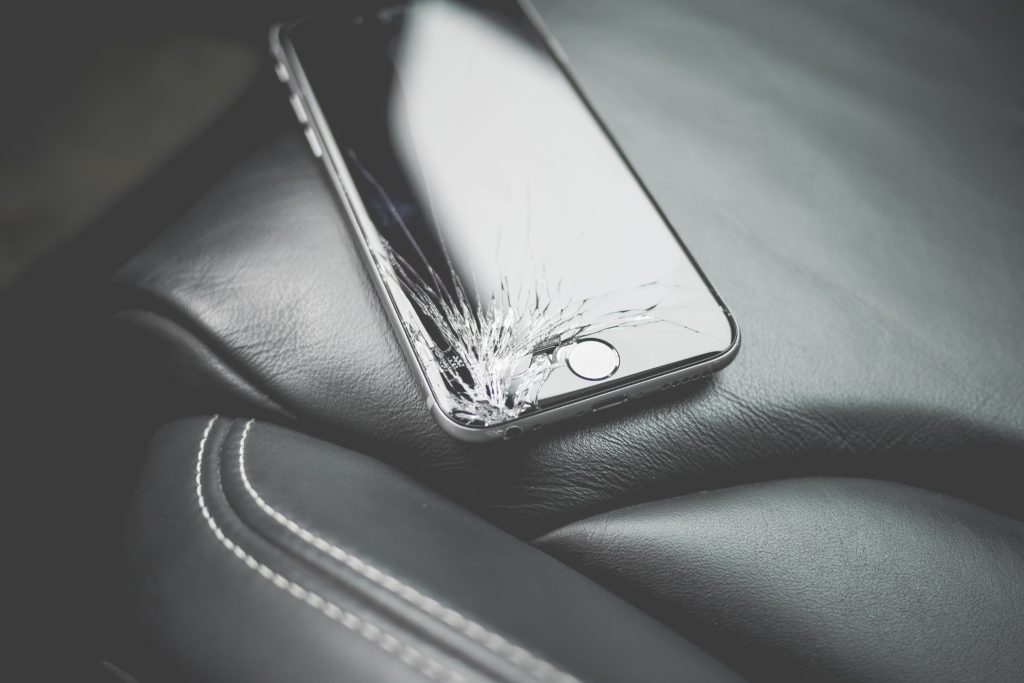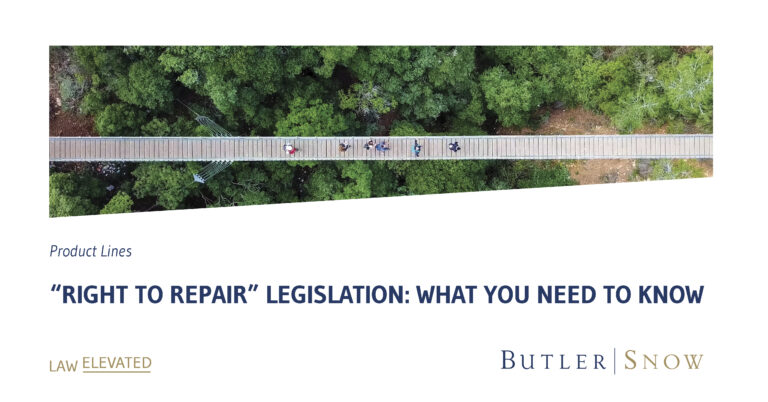 I just dropped my phone and turned it over to see the dreaded shattered screen. What do I do now? Where can I get this fixed? Is it easier to get a new phone?
I just dropped my phone and turned it over to see the dreaded shattered screen. What do I do now? Where can I get this fixed? Is it easier to get a new phone?
These questions all factor into the so-called “Right to Repair” legislative movement. The focus of the movement is on who can make repairs to electronic consumer products. Generally speaking, the proposed legislation is intended to allow consumers the right to modify and repair their own electronic devices, rather than relying on the manufacturer to make or authorize repairs with proprietary products.
Background
The Right to Repair movement first gained traction in 2012 when Massachusetts passed the Motor Vehicle Owners’ Right to Repair Act.[1] This Act required automotive manufacturers to make available “for purchase by owners of motor vehicles manufactured by such manufacturer and by independent repair facilities the same diagnostic and repair information, including repair technical updates, that such manufacturer makes available to its dealers through the manufacturer’s internet-based diagnostic and repair information system or other electronically accessible manufacturer’s repair information system.”[2]
In 2013, the “Digital Right to Repair Coalition” was formed, now known as “The Repair Organization.”[3] This organization promotes legislation at the federal and state level and purports to advocate for consumers’ right to use, modify, and repair their products. [4] In particular, the organization promotes bills to require that “original equipment manufacturers (OEMs) provide consumers and independent repair businesses equal access to repair documentation, diagnostics, tools, service parts and firmware as their direct or authorized repair provider.”[5] Thirty-two states have begun working on Right to Repair Legislation based on templates produced by The Repair Organization.[6]
“Model Legislation”[7]
The Repair Organization has published “Model Legislation” for states considering such laws. The Model Legislation does not apply to motor vehicle manufacturers, as these manufacturers are currently exempted “out of respect for the negotiated industry agreement in place between most manufacturers and most aftermarket groups.”[8] The Model Legislation contemplates enforcement by the State Attorney General, who would have the authority to issue fines for noncompliance.
Requirements
The Model Legislation applies to “digital electronic equipment” or “equipment” which is defined as “any product that depends for its functioning, in whole or part, on digital electronics embedded in or attached to the product.”[9] This legislation imposes three main requirements.
First, the Model Legislation requires the original equipment manufacturer of digital electronic equipment to make documentation, parts, and tools, inclusive of updates to information or embedded software, available to an independent repair provider or the owner of the electronic owner. This should be for the purpose of diagnosis, maintenance, or repair of the equipment. Further, this production should be on “fair and reasonable terms.”[10]
Second, for equipment with security related functions, the original equipment manufacturer must make resources available needed to disable the lock function and to reset it when disabled while in the course of diagnosis, maintenance or repair of the equipment.[11]
Third, if the original equipment manufacturer has made an express warranty for the digital electronic equipment and the wholesale price is $100 or more, the manufacturer will provide the tools to repair the equipment during the warranty period at an equitable price.[12]
Limitations
The so-called “Limitations” in the Model Legislation should be of particular interest for equipment manufacturers. While these limitations nominally appear to serve original equipment manufacturers, the extent to which the limitations provide bona fide protections is questionable. For example, one such “limitation” provides that the original equipment manufacturer is not required to divulge trade secrets. But the Model Legislation also contains the provision: “except as necessary to provide documentation, parts, and tools on fair and reasonable terms.”[13] The broad language of this exception invites uncertainty and litigation.
Further, the Model Legislation intends not to alter or affect any agreements between the manufacturer and any authorized repair providers. The manufacturers can maintain these relationships. However, any provision in the agreement that attempts to limit original equipment manufacturers’ obligations in the Act are rendered void and unenforceable. This could drastically impact contracts currently in place.
Impact on the Industry
Proponents of “Right to Repair” legislation characterize it as a consumer protection movement, “designed to amend existing law to limit the damage done by unfair and deceptive contracts.”[14] According to these advocates, the goal is to allow product owners the right to repair their own products and/or to obtain service at an independent retailer of the consumer’s choice.[15] This ostensibly creates a more competitive marketplace and reduces what the proponents characterize as the manufacturing monopoly. Proponents also claim the legislation seeks to reduce electronic waste and extends the useful life of a product in the marketplace.[16]
Product manufacturers, on the other hand, cite multiple reasons arguing against independent repair. Among these reasons is major concern about privacy and cybersecurity, insofar as independent organizations could gain access to personal information stored in consumer electronics.[17] Further, sensitive brand reputation could be easily changed by unauthorized changes to product technology.[18] Repairs also may be subject to proprietary software and technology in the marketplace, which presents significant copyright and other intellectual property issues.
We will continue watching how this debate plays out and will keep our readers posted.
[1] https://malegislature.gov/Bills/187/H4362
[2] Id.
[3] https://www.repair.org/history
[4] https://www.repair.org/aboutus
[5] https://www.repair.org/stand-up
[6] https://www.repair.org/legislation
[7] Id.
[8] Model Legislation, Section 6.
[9] Model Legislation, Section 2(b).
[10] Model Legislation, Section 3(a).
[11] Model Legislation, Section 3(b).
[12] See Model Legislation, Section 4(a-c).
[13] Model Legislation, Section 5(a).
[14] https://www.repair.org/legislation
[15] https://www.repair.org/policy
[16] https://www.repair.org/history
[17] https://apnews.com/article/legislature-nevada-coronavirus-pandemic-laws-5ade405a7befdf16e9f0107b7e142be3
[18] Id. See generally https://www.regulations.gov/docket/FTC-2019-0013/document.
